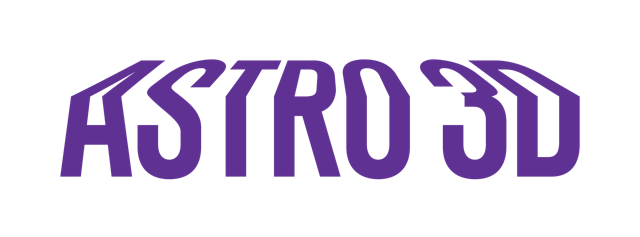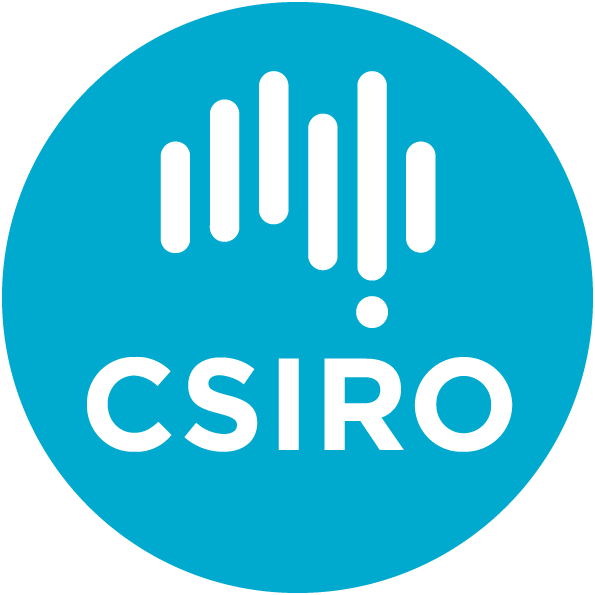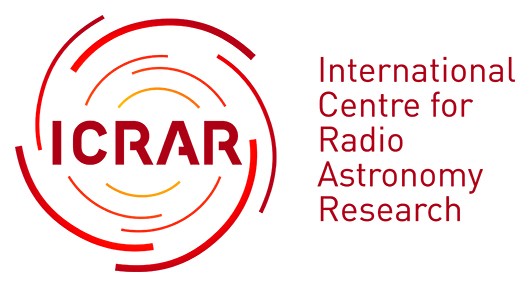August 2019
Editor: O. Ivy Wong
Typesetting by Cass Rowles
Foreword
Ivy Wong
Welcome to the Southern winter edition of the WALLABY newsletter. In this issue, the WALLABY management team reports on the reorganisation and restructuring of the WALLABY Science Working Groups. We also present one of the first images created from the full ASKAP-36 correlated array. The ASKAP spectral line commissioning update will be presented by Attila Popping. Barbara Catinella and Karen Lee-Waddell provides a short update on the WALLABY pilot survey strategy that is due to begin shortly. Karen also tells us more about WALLABY’s 2nd early science publication on the NGC 7232 galaxy group. From sunny Cagliari, Dane Kleiner presents a short highlight of his recently-submitted WALLABY early science study of IC 5201 within the extended NGC 7232 field. TWG 1 updates are provided by Garima Chauhan and Adam Stevens. Tobias Westmeier will update us on TWG 4. This issue also features a short description of the WALLABY+FAST synergy project that is led by Jing Wang from the KIAA at Peking University. As always, if you have any submissions or announcements for the next issue, please do not hesitate to email them to me. Happy reading!
Message from the WALLABY PI
Lister Staveley-Smith
The last few months has seen a transition in WALLABY activities from the early science phase to test observations with the full ASKAP-36 array. Most of our half-dozen early science papers have now been published or submitted, and some fantastic new ASKAP-36 images were unveiled by our project scientist, Karen Lee-Waddell, at the ASTRO 3D Science Meeting in Sydney in May. That data was extracted from a 9-beam sub-field in the Eridanus region and the results are highlighted by Karen below. We’ve yet to see the full 36 beam ASKAP spectral-line cube over the full bandwidth, but are working with the ASKAP operations team to ensure this will happen soon! In the meantime, and in preparation for ASKAP-36 pilot survey science and indeed the full WALLABY survey, we have re-structured our Science Working Groups (SWGs) into a smaller number of groupings and appointed nine SWG chairs/co-chairs to better inform WALLABY members about science opportunities, and to provide advice to WALLABY management and executive about science directions. The new structure is summarised by Tobias Westmeier below, and we have updated the WALLABY website to reflect these changes. The first SWG chair meeting occurred in June, and regular videocons will be held thereafter.
Message from the project manager
Tobias Westmeier
New Science Working Group Structure
When the WALLABY project was launched about a decade ago, ten science working groups (SWGs) were established for the purpose of coordinating the scientific exploitation of WALLABY data. As a result of the delays in the deployment of ASKAP, the SWGs have been largely inactive for many years, and the scientific landscape has changed quite significantly since the original SWGs were set up.
With WALLABY pilot observations anticipated to start later this year, the time has come to re-define the role and scope of the SWGs in preparation for the upcoming official review of all ASKAP SSPs. Feedback from participants of the WALLABY break-out session at the PHISCC workshop in Perth earlier this year indicated that many team members would welcome a reduction in the overall number of SWGs to ease communication and focus on the main science goals of the survey. In response to this feedback, the WALLABY management team has revised the SWG structure and amalgamated the original ten SWGs into five new working groups that are largely centred on the science cases associated with the different classes of objects and spatial resolutions encountered across the redshift range covered by WALLABY.
The following table gives an overview of the five new WALLABY SWGs:
|
SWG |
Title |
Chair(s) |
Topics |
|
1 |
High Resolution: Milky Way & High-velocity Clouds |
Helga Dénes |
Galactic HI, Galactic HVCs |
|
2 |
Medium Resolution: The Local Volume |
Se-Heon Oh |
Dwarf galaxies, morphology & kinematics of galaxies, tidal interaction, ram-pressure stripping, gas accretion & mergers, ISM processes, intra-group medium |
|
3 |
Low Resolution: The Local Universe |
Barbara Catinella |
Galaxy clusters, gas removal & accretion, environmental influence on gas content |
|
4 |
Cosmology & Statistical Studies |
Cullan Howlett |
Precision cosmology, cosmic web, HI mass function, Tully-Fisher relation |
|
5 |
Multi-wavelength & ASKAP Survey Synergies |
Luca Cortese |
HI absorption, HI stacking, radio continuum & star formation, multi-wavelength properties, optical spectroscopy & metallicity, HI scaling relations |
A call for expressions of interest for chairing one of the newly created SWGs was sent out to the entire WALLABY team in April. Overall, there was a good response to the call, and chairs for all SWGs have now been appointed (Fig 1). The main role of the new chairs will be to coordinate SWG activities and facilitate interactions within their SWG, facilitate the development of science proposals relevant to their SWG and report to the WALLABY management team at regular meetings, the first of which is scheduled to be held in late June.
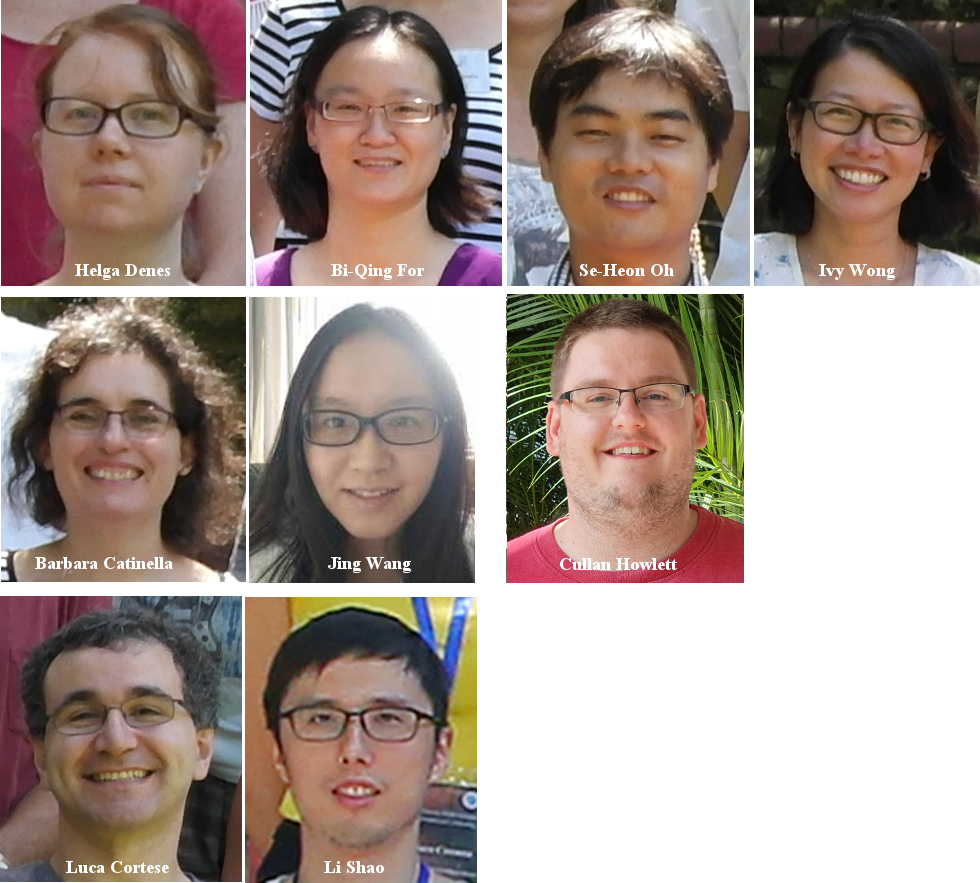
Message from the project scientist
Karen Lee-Waddell
As mentioned by Lister above, the WALLABY team has obtained full 36-antennae observations with the full 288 MHz band of the Eridanus field. Progress with the processing pipeline has resulted in the 9-beam data cube shown in Fig 2 for the higher frequency portion of the band that is relevant to the Eridanus subcluster region.
Profile
Cullan Howlett (University of Queensland)
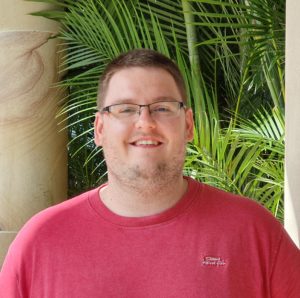
I am a Postdoctoral Fellow in Cosmology at the University of Queensland (Fig 3), and am very excited to be joining the WALLABY Team as lead of SWG4: Cosmology and Statistical Studies. I completed my PhD in 2015 at the Institute of Cosmology and Gravitation – Portsmouth, before taking on a postdoctoral position at the International Centre for Radio Astronomy Research, University of Western Australia. I moved to my current position in Brisbane in April 2019.
My main research interests are in modelling and measuring large-scale structure, testing different models of gravity, and mapping structures and motions in the our Local Universe. Two of the best ways of doing this are through measurements of Redshift-space galaxy clustering and direct measurements of galaxy peculiar velocities. WALLABY will provide one of the largest low redshift samples of both of these over the coming years, enabling us to tackle some of cosmology’s most fundamental questions.
However, there are few hoops that we will need to jump through to transform these exquisite radio observations into cosmology. For example, how best to obtain the Tully-Fisher parameters needed for the peculiar velocity measurements from the raw data; how to accurately model the clustering of WALLABY galaxies; and how to control for systematics in the data to be sure we get robust statistical results. I look forward to working with you all to answer these questions (and invite you to come up with many more!) as the survey evolves. I hope we can work together to make WALLABY one of the premier cosmological datasets of the next decade.
ASKAP Early Science Commissioning Update
by Attila Popping
Since the previous newsletter the first three WALLABY Early Science papers have been published by T. Reynolds et al. on the NGC7162 galaxy group, by K. Lee-Waddell et al. on the NGC7232 galaxy group and by A. Elagali et al. on spiral galaxy NGC1566. Two more papers are currently being refereed and are expected to be published soon. All these papers were based on ASKAP early-science data with a limited number of telescopes and limited bandwidth. In preparation of the ASKAP pilot surveys, we started working on ASKAP data using the full 36 telescope array and covering 288 MHz of bandwidth.
Currently the Eridanus field and the GAMA-12 field have been observed in full spectral line mode. Reduction of these observations remains a challenge due to the enormous data volume. Nevertheless we are making good progress in understanding the data and with every processing iteration the image cubes look better. Especially for the Eridanus field we reach science quality data for some of the reduced beams, down to the expected thermal noise.
Given that the processing of data is taken over by ACES and the ASKAP processing team, the shift of the spectral line working group is moving towards data validation and quality control. We have produced a number of scripts and metrics to quantify stability of the bandpass, noise characteristics and image quality. We will be implementing all these scripts and methods in a data-verification workflow to assess the quality of cubes generated by ASKAPsoft and aid the processing team with feedback and improving processing parameters.
WALLABY pilot survey update
by Barbara Catinella & Karen Lee-Waddell
With the ASKAP Pilot Surveys, designed to assess readiness to conduct full surveys, starting soon, the WALLABY team has been working on target field prioritisation. Taking into account the current performance of the array, ~16 hrs per pointing are required to achieve the full WALLABY sensitivity of ~1.6 mJy beam-1 per 4 km s-1 channel. The 100 hour on-source observing time allocation would then result in about six pointings. After a team discussion on target field selection that took place in February, in connection with the 12th PHISCC meeting, a shortlist of 11 fields was compiled. These were drawn from the list of 31 fields proposed for the Early Science phase that were not already observed, based on their potential to maximise the science output and suitability to test various technical aspects (e.g. verifying high declination capabilities, assessing the noise smoothness between adjacent pointings, ensuring proper continuum subtraction in various regions).
The fields were prioritised following the preferences expressed by the team votes. The 3 high-priority fields are the Hydra cluster (one of the regions with highest density of late-type galaxies on the ASKAP FoV scale), the NGC 4636 group (proposed field for joint FAST and ASKAP HI observations, with main goal of mapping intragroup HI emission) and the Norma cluster (by far the highest density region of galaxies, including late-types, within the southern sky).
WALLABY Early Science Paper 2: The NGC 7232 galaxy group
by Karen Lee-Waddell
In this recently published paper, we present ASKAP HI data on the NGC 7232/3 triplet and its surrounding group members. All observations were taken during the Early Science period of the array and processed using the ASKAPsoft data processing pipeline. Within a subregion of the field (comprising 12 beams and a spectral range between 1100 – 3300 km s-1), we detect 17 HI sources (see Figure 4). Six of these detections are well-known HI-rich galaxies, including one fully interacting pair. Five of these detections are newly resolved HI galaxies with identifiable stellar counterparts. The remaining six HI detections are likely tidal debris associated with the NGC 7232/3 triplet.
The triplet is a complex system. The HI components of NGC 7232 and NGC 7233 appear to be fully intertwined (see Figure 5). Whereas, NGC 7232B still retains most of its gas but shows evidence that it is beginning to interact with the other two galaxies. HI clouds C5 and C6 are likely tidal clumps that have been produced by the triplet system and possibly indicate the projected spatial location of two tidally-formed tails. If HI cloud C6 is moving away from its parent galaxies, it has sufficient mass to eventually decouple from the tidal tail and possibly evolve into a long-lived TDG. HI clouds C1-C4 are likely transient tidal knots that are possibly part of a diffuse tidal bridge between NGC 7232/3 and another group member, the lenticular galaxy IC 5181.
Please refer to our published paper, Lee-Waddell et al. 2019, for more details. The final ASKAP image cube is available for download from CASDA.
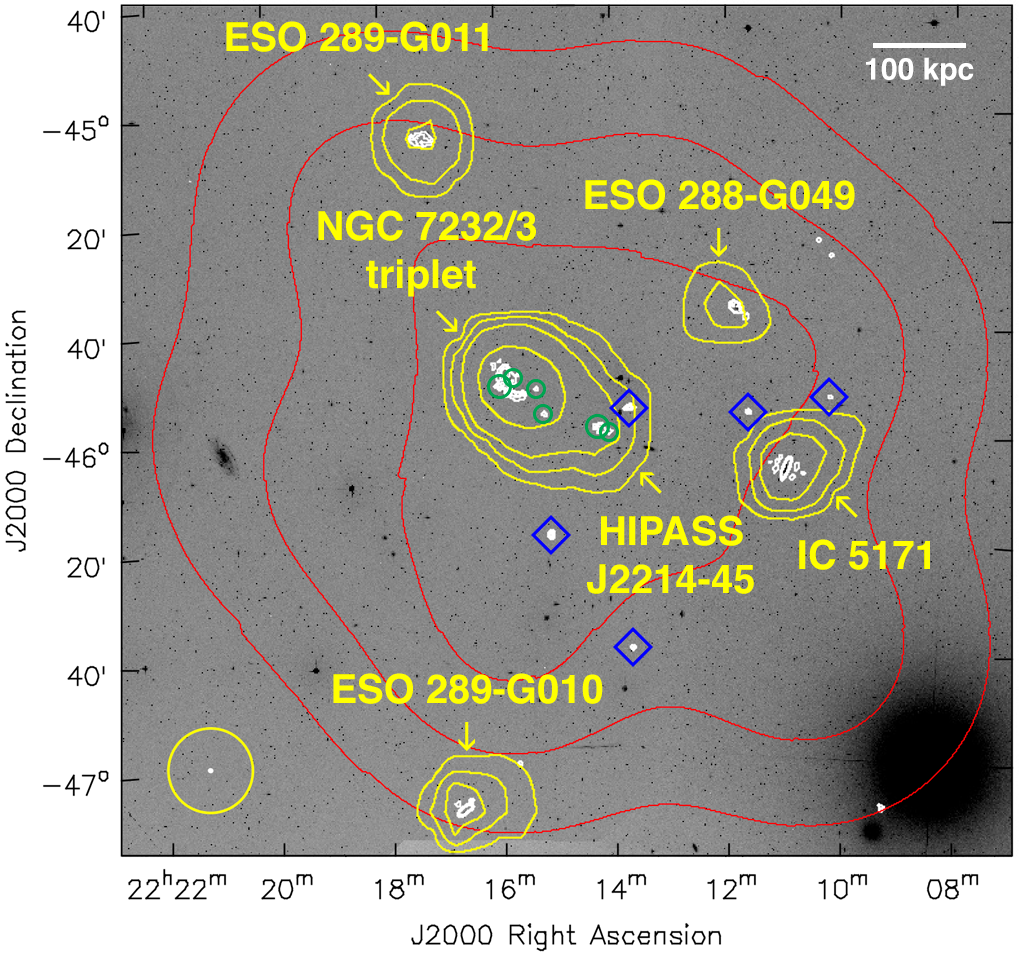
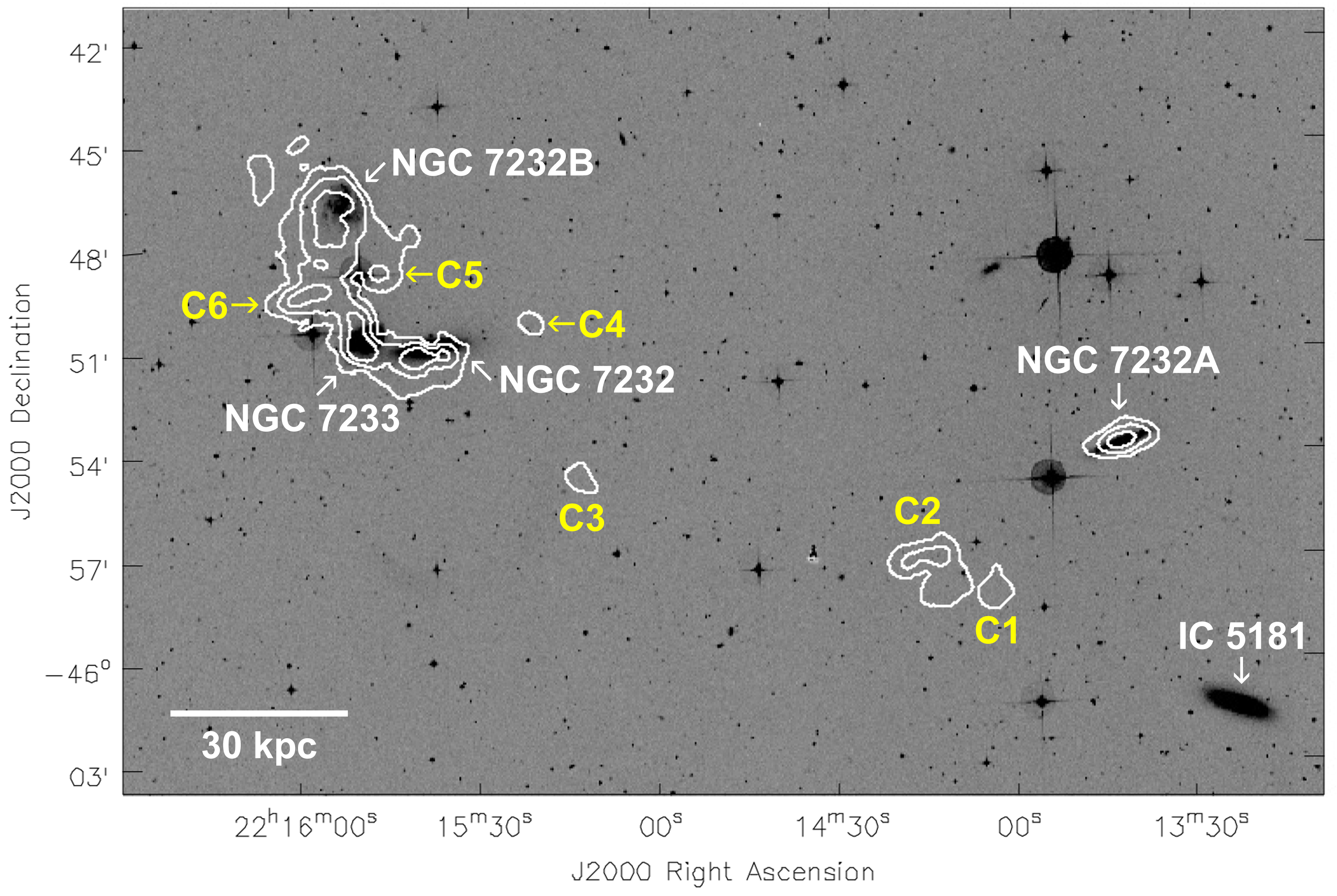
Early science WALLABY Paper 4: ASKAP HI imaging of IC 5201
by Dane Kleiner
This paper (accepted for publication in MNRAS; arXiv link) uses the NGC 7232 early science observations to image the nearby spiral galaxy IC 5201 (Figure 6). Mosaicking 150 hours of observations yield a 4-beam cube with an RMS noise level of ~ 1.7 mJy beam-1 per channel, equivalent to a column density of NHI = 1.4 × 1020 cm−2 over 25 km s−1. These are the highest resolution HI images of IC 5201 to-date and have enabled a detailed analysis of the HI disk of the IC 5201 and its surroundings.
We detect 9 extragalactic HI sources, 5 of which are new HI detections including the first velocity measurements for 2 galaxies. These sources are IC 5201 (Figure 6) and 3 dwarf satellite galaxies, 2 galaxies and a tidal feature belonging to the NGC 7232/3 triplet and 2 potential in-falling galaxies to the triplet. We analyse the kinematics and multi-wavelength data of IC 5201 and its satellites, finding evidence of a previous tidal interaction between IC 5201 and one if the satellites. This evidence is characterised by the warped HI disc and asymmetric (stellar) spiral arms of IC 5201 along with the irregular stellar and HI morphology of the dwarf satellite. A close fly-by between these two galaxies in the last Gigayear is likely responsible for these characteristics.
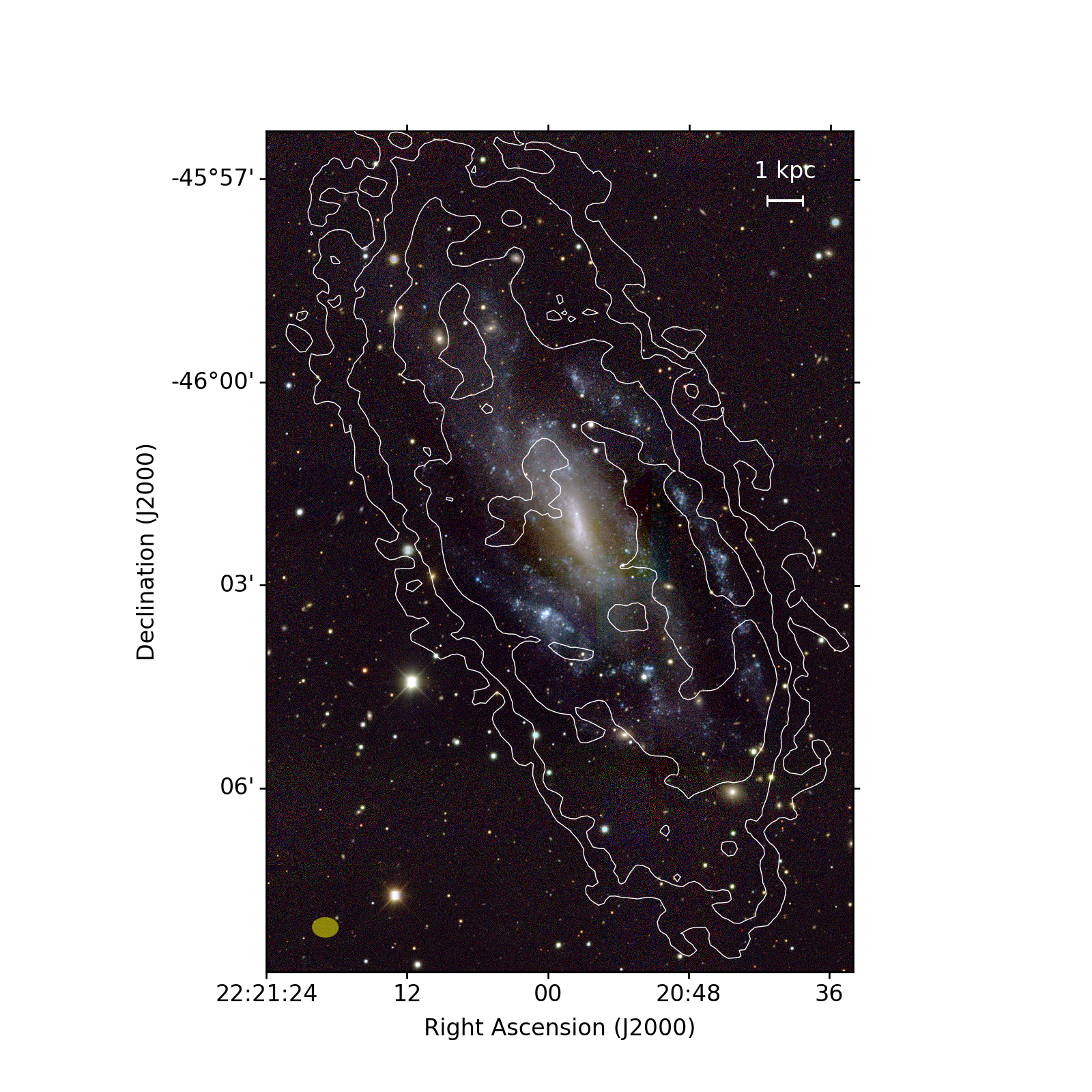
TWG 1 – theory and simulations
Update from Garima Chauhan
New simulated WALLABY lightcones are now available. These have been constructed using the SURFS N-body simulations (Elahi et al. 2018) combined with the new state-of-the-art semi-analytic model Shark (Lagos et al. 2018). We construct an HI emission line for each galaxy from their HI surface density and circular velocity profiles and use outputs at different redshifts to produce a mock-observed WALLABY sky (see Chauhan et al. 2019 for details). In these mock catalogues, we provide all the major galaxy properties of interest, ranging from stellar and gas mass to star formation rates and angular momentum, rotational velocities and inclination of the galaxies. We also have the full spectral energy distribution (SED) information, going from the 21cm radio emission lines to FUV wavelengths (see Fig 7). These lightcones have the potential to help understand the biases and limitations of WALLABY and hence enable us to use the survey to its full capacity.
If you are interested in using these lightcones for your research (or are just plain curious), feel free to contact me and I can arrange access to them.
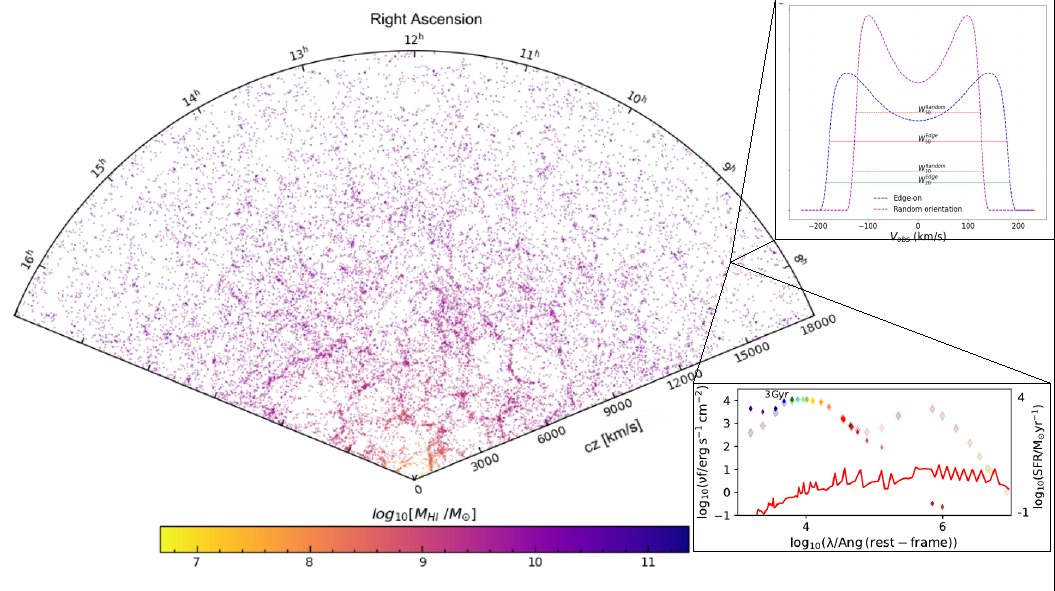
Update from Adam Stevens
In a paper very recently submitted to MNRAS by Adam Stevens and co, the origin of the galaxy HI size—mass relation is explored. The size—mass relation itself is derived explicitly for a variety of analytic models that assume the HI surface density profiles of galaxies follow common forms. All of them predict relations that are nearly identical to observations, as shown in Fig 8.
These analytic models are tested in more detail against resolved 21-cm profiles of real galaxies and the outputs of cosmological simulations. All of them appear robust. The effect of environment is also studied in detail, where it is shown both analytically and with simulations that environment cannot have more than a small, secondary impact (order 0.01 dex) on the size—mass connection.
The significance for Wallaby is that the HI size—mass relation should hold for all galaxies, regardless of their mass, morphology, or environment. This means the HI sizes of all unresolved Wallaby galaxies should be easily recovered with minimal uncertainty from the integral of their 21-cm lines alone.
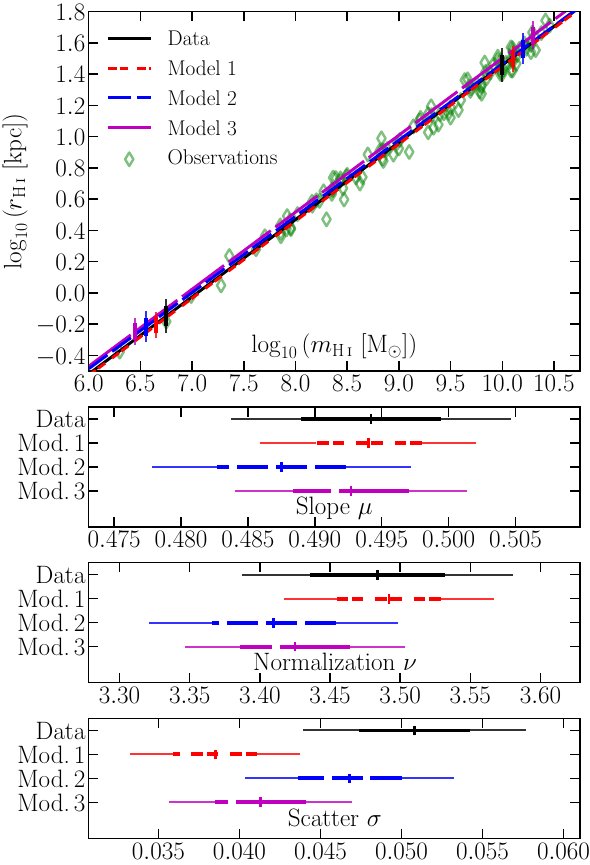
TWG 4 – Source Finding and Cataloguing
by Tobias Westmeier on behalf of TWG 4
Release of SoFiA 1.3
The latest stable version 1.3 of SoFiA, our source finding and parameterisation pipeline, was released on 29 March 2019 and is available on GitHub.
The latest release comes with several new features, the most notable of which include the introduction of source quality flags that indicate if a source is truncated for a number of reasons, new control parameters to automatically remove false detections at the linking stage (e.g. based on a maximum size threshold), and an experimental feature to automatically identify and flag lines of sight that are dominated by artefacts such as residual continuum emission.
In addition, we have improved the way in which SoFiA estimates the reliability of sources. In the past, we calculated the density of positive and negative sources in a particular 3-D parameter space by default. However, two of the selected parameters, the integrated flux and the number of pixels of the source, turned out to be strongly correlated, as a result of which we were effectively operating in a 2-D space only. By replacing the number of pixels with the mean flux density across the source, we are now using three largely uncorrelated parameters, leading to a more accurate estimate of the reliability of detections made by SoFiA.
The path ahead
The team is currently busy getting SoFiA ready for full WALLABY data processing. The first step in the direction of creating a fast, parallel H Ⅰ source finding pipeline is the conversion of the relevant algorithms developed for SoFiA from Python to plain C. The purpose of this effort is to make the algorithms faster, more memory-efficient and independent of any third-party Python libraries that have caused countless incompatibility issues in the past.
This process is now mostly complete, and the new C version of SoFiA, named SoFiA 2, is now available on GitHub. As the new version has not been thoroughly tested yet, we recommend that users continue to work with SoFiA 1.3 for the time being. However, if you are keen to give SoFiA 2 a try, please don’t hesitate to test it on your own data and provide us with feedback on how well it works and which aspects would need to be improved.
The next step after conversion to C will be parallelisation of SoFiA 2. There are two parts to this process that will need to be addressed:
- The most time-consuming algorithms in SoFiA will need to be multi-threaded to ensure that they make use of as many cores as possible on a single computing node.
- In addition, as WALLABY data cubes will be too large to load into memory and process in one go, we will need to develop an infrastructure around the SoFiA pipeline that will split a large data cube into manageable chunks that can be farmed out onto multiple computing nodes for parallel processing. The results will then need to be merged again into a single, coherent source catalogue.
Our application to the ADACS Software Support Programme to get support for part 1, the implementation of multi-threading, has been accepted and approved. Part 2, the development of a parallelised wrapper around the SoFiA pipeline, will be addressed as part of a WALLABY support project by the Australian SKA Regional Centre (AusSRC) Design Study Programme. The fully parallelised version of the SoFiA pipeline is expected to be ready by the end of 2019 and will be made available to the entire community.
WALLABY+FAST synergy project
by Jing Wang
Most galaxies in the low redshift universe evolve in groups, and the fate of HI gas in galaxies is a key part of this picture. The existing HI data for groups are shallow, biased against low stellar mass systems, or of low statistical significance, hence are not optimised for studying the group environmental effects on the evolution of galaxies. We hence launch a project of synergistic HI observations of galaxy groups with the FAST and ASKAP telescopes. The combination of both datasets enables us to detect the diffuse and faint HI, while at the same time resolving the bright HI structures in the groups. We will be able to study in detail how galaxies lose or accrete gas in the groups and the fate of the HI removed from galaxies.
As a pilot survey, we will map the HI in and around the nearby NGC 4636 loose group. This group has been firstly selected for its good balance in suitable sky position and size, high density of galaxies, and rich multi-wavelength information. NGC 4636 has an extended X-ray emitting halo, and 57 known galaxies, so both ram pressure and tidal stripping effects can be studied. ALFALFA detected 33 galaxies down to 107.3 M⊙, and we expect to detect with FAST 8.5 times more galaxies down to 107.0 M⊙, with a similar exposure time as ALFALFA, thanks to the high sensitivity of FAST. 34 of the galaxies are expected to have HI diameters greater than 120”, suitable for morphological and kinematical analysis with the ASKAP data. We also expect to image the intragroup HI gas down to a column density of 3.6×1018 atoms cm-2 on different spatial scales. The observations are expected be conducted with FAST in June/July 2019, and with ASKAP in August 2019 as part of the WALLABY pilot survey.
Report from recent meetings
12th PHISCC meeting + associated focus sessions, ICRAR/University of Western Australia, Australia (11-15 Feb 2019)
by Ivy Wong
This year’s PHISCC meeting and related focus sessions were held at ICRAR / University of Western Australia and it was a great honour that I got to co-chair this meeting. As early-science observations have begun with several of the SKA pathfinder surveys and facilities, there is a greater focus in this year’s plenary session (first 2.5 days) on the science from these early observations in addition to SKA and working group updates. The following 2.5 days were divided into 18 parallel topics (eg. Visualisation, RFI mitigation, quality control, source finding and parameterisation) and team meetings. Overall, the excitement of the HI community was evident by the lively discussions throughout the entire week’s programme. We thank everyone for their participation and look forward to catching up again at the 13th PHISCC workshop this upcoming May in Sardinia, Italy. The official conference photo taken by Boyang Liu is shown in Fig 9.
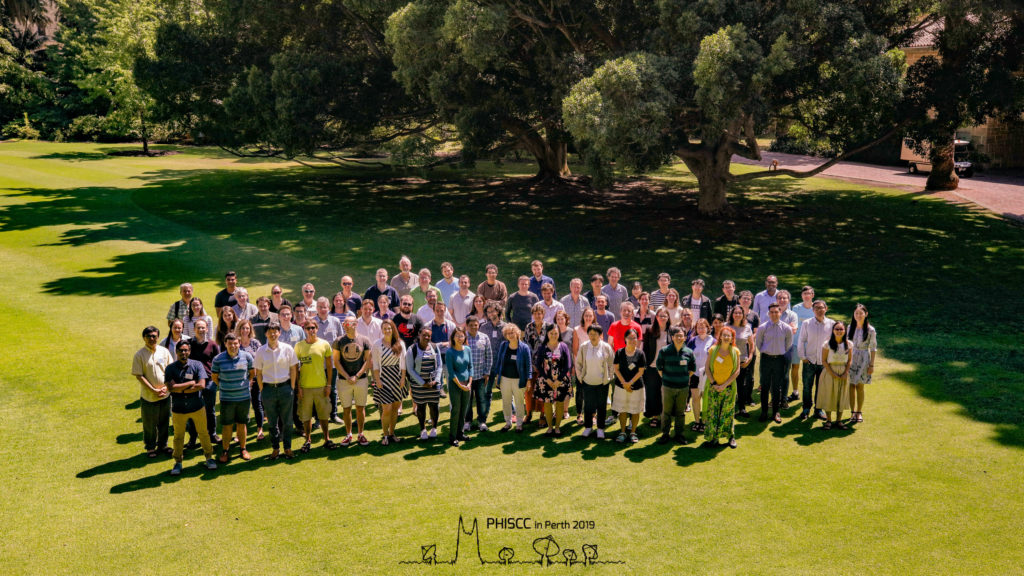
Life & Death of star-forming galaxies, Scarborough, Australia (18-22 March 2019)
by Ivy Wong
The process of star formation is highly relevant to large-area surveys of cold gas such as that of WALLABY. As such, 9 WALLABY members attended this ASTRO 3D-funded meeting. Four specific topics pertaining to star formation in galaxies were discussed: 1)the role of bulges on star formation; 2)the regulation of star formation efficiency in galaxies; 3)transitioning galaxies; and 4)reliable star formation histories of galaxies. The programme provided balanced perspectives from both theory and observations (mainly optical) on each of these focus topics. The official conference photo taken by Igor Chillingarian is shown in Fig 10.
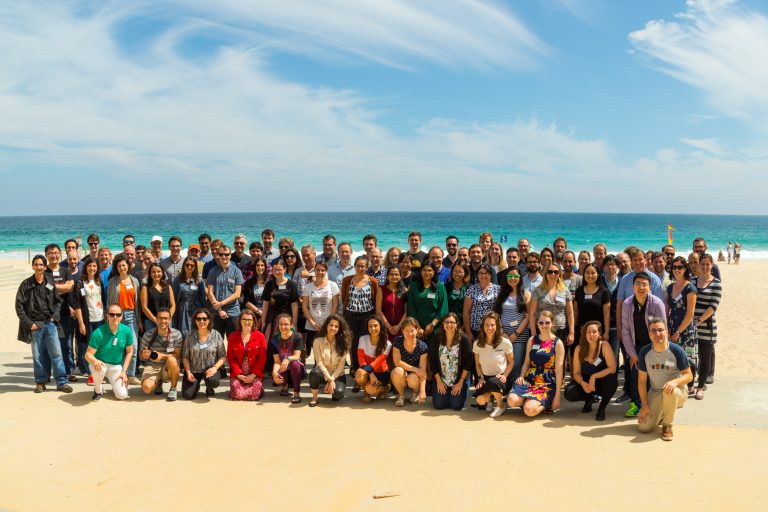
Up-coming Meetings
2019 July 29 – Aug 23: Galaxy evolution in a new era of HI surveys (MIAPP), Munich, Germany
2020 late-February : Cosmic Flows, Cape Town, South Africa
2020 May 11 – 13: 13th PHISCC workshop in Cagliari, Italy
WALLABY Publications
2019 journal articles which mention WALLABY (according to ADS):
Qin, F., Howlett, C. & Staveley-Smith, L. 2019 The Redshift-Space Momentum Power Spectrum II: measuring the growth rate from the combined 2MTF and 6dFGSv surveys Monthly Notices of the Royal Astronomical Society, DOI: 10.1093/mnras/stz1576
Howlett, C. 2019 The Redshift-Space Momentum Power Spectrum I: Optimal Estimation From Peculiar Velocity Surveys Monthly Notices of the Royal Astronomical Society, DOI: 10.1093/mnras/stz1403
Elagali, A., Staveley-Smith, L., Rhee, J., Wong, O.I., Bosma, A., Westmeier, T., Koribalski, B.S., Heald, G. et al 2019 WALLABY Early Science – III. An H I Study of the Spiral Galaxy NGC 1566 Monthly Notices of the Royal Astronomical Society, 487, 2797
Graham, M.J., Kulkarni, S.R., Bellm, E.C., Adams, S.M., Barbarino, C., Blagorodnova, N., Bodewits, D., Bolin, B. et al 2019 The Zwicky Transient Facility: Science Objectives Publications of the Astronomical Society of the Pacific, 131, 8001
Said, K., Kraan-Korteweg, R. & Staveley-Smith, L. 2019 The H I mass function in the Parkes H I Zone of Avoidance survey Monthly Notices of the Royal Astronomical Society, 486, 1796
Dupuy, A., Courtois, H.M. & Kubik, B. 2019 An estimation of the local growth rate from Cosmicflows peculiar velocities Monthly Notices of the Royal Astronomical Society, 486, 440
Oh S.-H., Staveley-Smith, L. & For, B.-Q. 2019 Robust profile decomposition for large extragalactic spectral-line surveys Monthly Notices of the Royal Astronomical Society, 485, 5021
Bekki, K. 2019 Constraining the three-dimensional orbits of galaxies under ram pressure stripping with convolutional neural networks Monthly Notices of the Royal Astronomical Society, 485, 1924
Bok, J., Blyth, S.-L., Gilbank, D.G. & Elson, E.C. 2019 Enhanced H I profile asymmetries in close galaxy pairs Monthly Notices of the Royal Astronomical Society, 484, 582
Džudžar, R., Kilborn, V., Meurer, G., Sweet, S.M., Drinkwater, M.J., Bekki, K., Audcent-Ross, F., Koribalski, B. et al 2019 The neutral hydrogen properties of galaxies in gas-rich groups Monthly Notices of the Royal Astronomical Society, 483, 5409
Baugh, C.M., Gonzalez-Perez, V., Lagos, C.D.P., Lacey, C.G., Helly, J.C., Jenkins, A., Frenk, C.S., Benson, A.J. et al 2019 Galaxy formation in the Planck Millennium: the atomic hydrogen content of dark matter halos Monthly Notices of the Royal Astronomical Society, 483, 4922
Bengaly, C.A.P., Larena, J. & Maartens, R. 2019 Is the local Hubble flow consistent with concordance cosmology? Journal of Cosmology and Astroparticle Physics, 03, 001
Murugeshan, C., Kilborn, V., Obreschkow, D., Glazebrook, K., Lutz, K., Džudžar, R. & Dénes, H. 2019 Angular momentum regulates H I gas content and H I central hole size in the discs of spirals Monthly Notices of the Royal Astronomical Society, 483, 2398
Graziani, R., Courtois, H.M., Lavaux, G., Hoffman, Y., Tully, R.B., Copin, Y. & Pomarède, D. 2019 The peculiar velocity field up to z ~0.05 by forward-modeling Cosmicflows-3 data Monthly Notices of the Royal Astronomical Society, DOI: 10.1093/mnras/stz078
Lee-Waddell, K., Koribalski, B.S., Westmeier, T., Elagali, A., For, B.-Q., Kleiner, D., Madrid, J.P., Popping, A. et al 2019 WALLABY Early Science – II. The NGC 7232 galaxy group Monthly Notices of the Royal Astronomical Society, DOI: 10.1093/mnras/stz017
Shah, M., Bekki, K., Vinsen,K. & Foster, S. 2019 Impact of dark matter sub-haloes on the outer gaseous discs of galaxies Monthly Notices of the Royal Astronomical Society, 482, 4188
Reynolds, T.N., Westmeier, T., Staveley-Smith, L., Elagali, A.., For, B.-Q., Kleiner, D., Koribalski, B.S., Lee-Waddell, K. et al 2019 WALLABY early science – I. The NGC 7162 galaxy group Monthly Notices of the Royal Astronomical Society, 482, 3591
